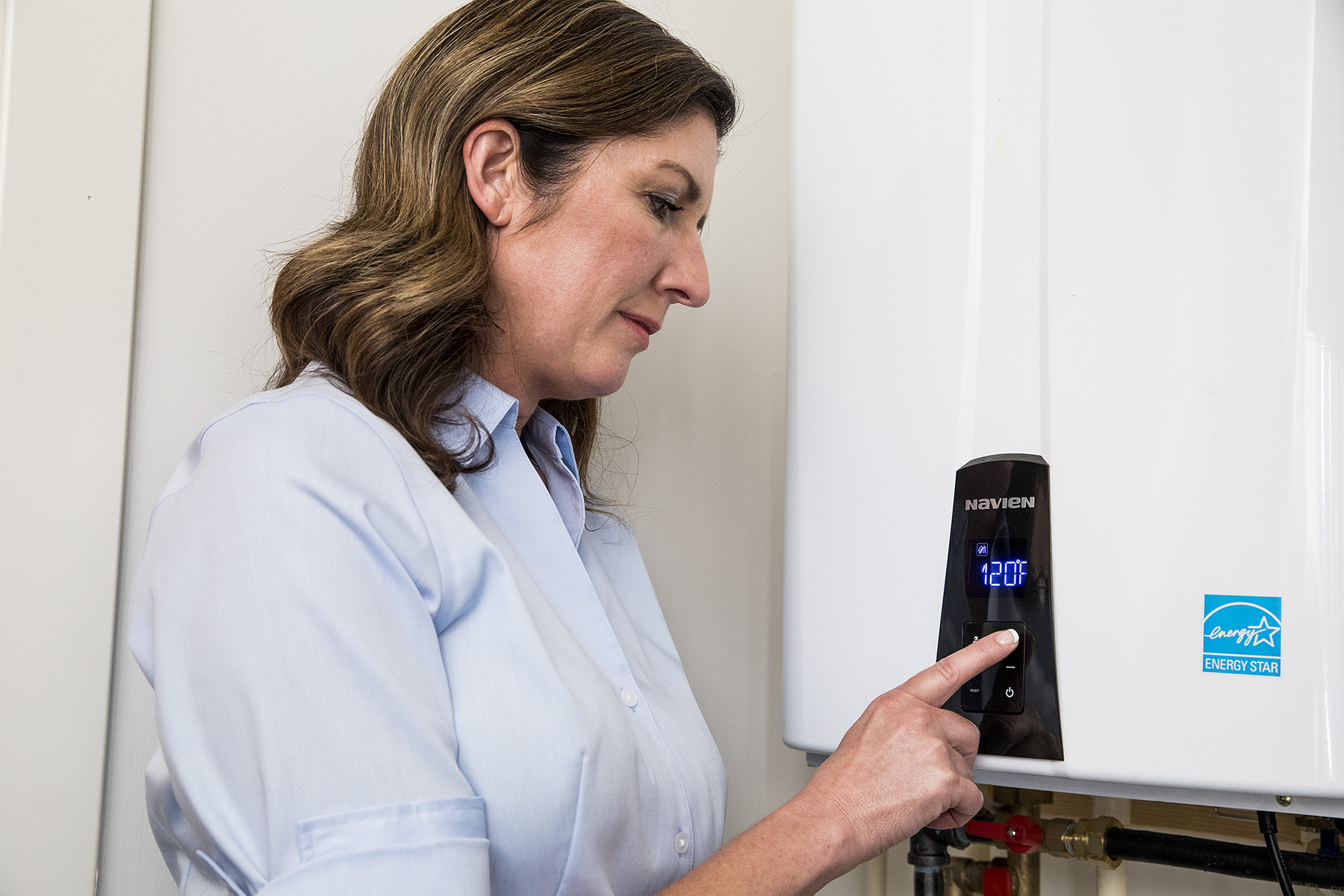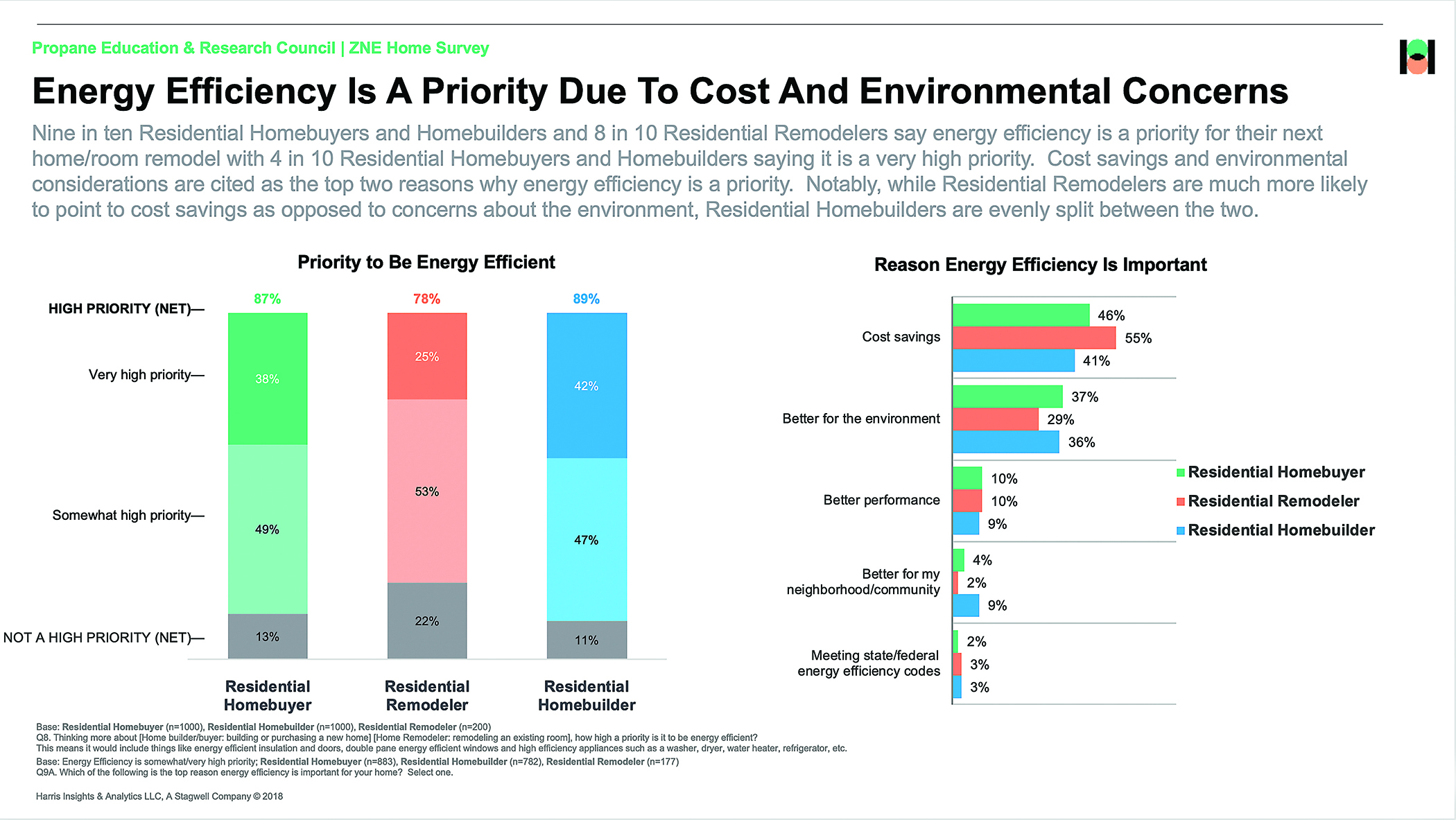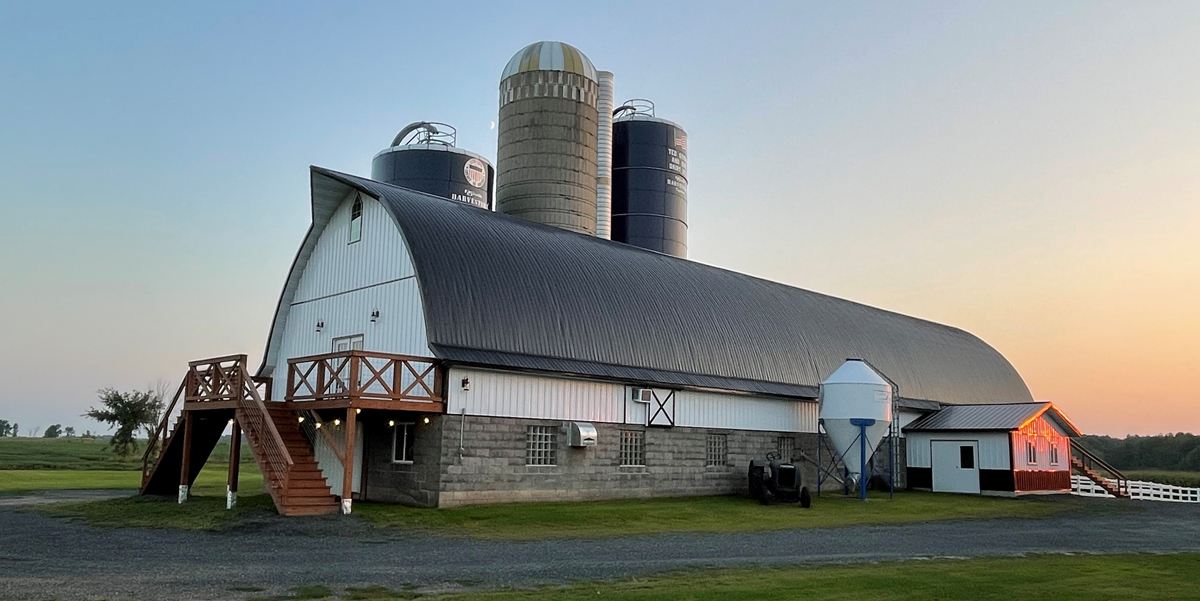Homeowner and home buyer priorities are shifting. The majority of residential customers are seeking high-performance homes — specifically ones with reduced energy costs and lower environmental impacts.
These insights were revealed in a 2019 study commissioned by the Propane Education & Research Council and conducted by an independent third-party research firm, Harris Insights & Analytics LLC. Results consisted of feedback from 2,200 U.S. residents who said they would soon buy, remodel, or build a home. The survey also received responses from 200 construction professionals on the same subject.
Most notably, residential respondents expressed a willingness to pay more to make a home or remodeling project energy efficient — 81 percent of customers remodeling a home, 88 percent of customers buying a home, and 96 percent of customers building a home.
Customers often turn to construction professionals to help them select the right energy systems for their home. This creates a great opportunity for builders and contractors who are well-versed in energy-efficient systems, enabling them to capitalize on this growing customer base.
Propane can provide a whole-home solution for these customers because propane appliances offer considerable advantages over other systems when it comes to efficiency, performance, sustainability, and dependability.
High-efficiency propane systems offer reduced annual energy costs
Propane is a versatile energy source, powering everything from space and water heating to clothes dryers in residential and commercial buildings. Many of a home’s major systems perform better with gas energy, too, so homeowners will enjoy greater comfort and lower energy bills compared with all-electric homes.
High-efficiency propane tankless water heaters, for instance, can save roughly $150 to $200 per year compared with typical electric storage tank water heaters or heating oil systems. These systems can reduce energy costs by up to 50 percent and eliminate standby energy loss from the tank, as well as the unnecessary expense of heating water when it’s not being used.

To achieve such high efficiency ratings, many propane tankless systems utilize a condensing design, where additional thermal energy is extracted from the combustion gases to pre-heat incoming water, increasing overall system efficiency. Plus, these systems can qualify for credits and rebates in new construction and as replacements to existing systems — making them even more cost-effective.
In addition, high-efficiency propane furnaces offer efficiency ratings from 90 to 98 percent and can lower annual energy costs compared to several other options. According to a study conducted by Newport Partners, LLC, the annual energy costs of a high-efficiency propane furnace were $1,650 — 10 percent lower than standard-efficiency air source heat pumps and 14 percent lower than heating oil furnaces.
Propane may reduce a home’s carbon footprint
Propane is a low-carbon energy source that produces significantly fewer greenhouse gas emissions (GHG) than most other energy sources. Many homeowners and home buyers are paying attention to their carbon footprint and looking for areas to reduce emissions – and their home appliances are no exception.
The best way for construction professionals to help environmentally conscious customers reduce their emissions for space and water heating, clothes drying, and cooking is by incorporating propane-powered appliances into the project.
For example, high-efficiency propane tankless water heaters can produce up to 61 percent fewer GHG emissions, 47 percent fewer nitrogen oxide (NOx) emissions, and 91 percent fewer sulfur oxide (SOx) emissions than electric storage tank water heaters, according to data from PERC. They operate cleaner than electric tankless models, too. In fact, propane tankless systems emit up to 57 percent fewer GHG emissions compared with electric tankless systems in both residential and commercial applications.
And with a propane furnace, homeowners have a cleaner source of home heat than electric furnaces, Energy Star-rated and standard electric heat pumps, and heating oil. Plus, propane has a reputation for keeping homes more comfortable with a warmer heat than other power sources. According to a study from the Gas Technology Institute (GTI), propane furnaces can produce up to 50 percent fewer greenhouse gas emissions than an electric furnace and 22 percent fewer than an electric heat pump.
Further, propane cooking ranges generate up to 15 percent fewer full-fuel-cycle GHG emissions and 83 percent fewer SOx emissions compared to electric ranges. And propane clothes dryers, when compared with electric models, produce up to 42 percent fewer full-fuel-cycle GHG emissions, 23 percent fewer NOx emissions, and 83 percent fewer SOx emissions.
The customer demand for clean, efficient home builds continues to rise. When customers turn to you for guidance, make sure you’re well-versed on high-performance solutions, including propane systems. Visit Propane.com/Residential-Construction to learn more about the benefits of propane. RB


















